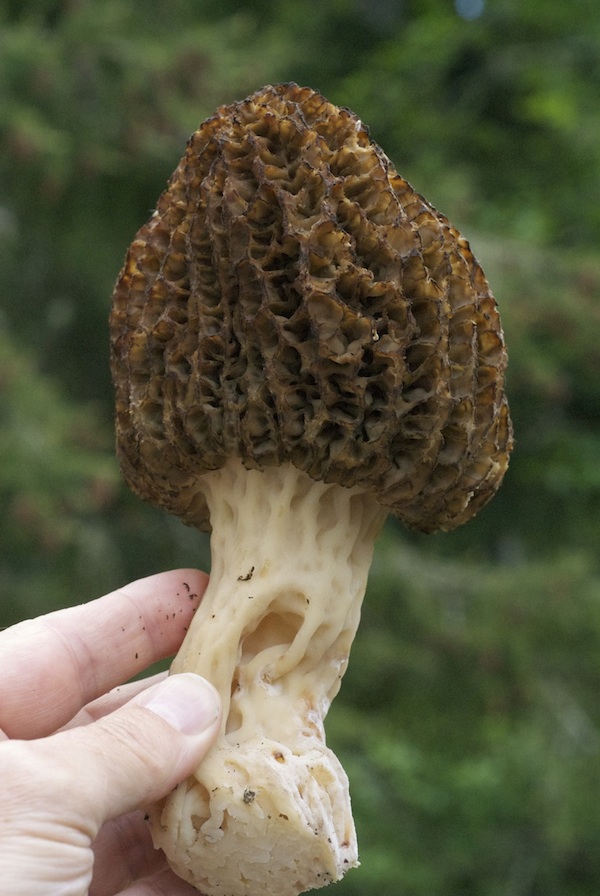
Morel mushrooms, known to be hard to grow outside of a lab, sprout on Stamets’ farm. Photo by Dusty Yao / Fungi Perfecti
On a small mushroom farm tucked away about an hour south of Seattle, Paul Stamets has his nose in the dirt. Under the soil everywhere on Earth is the world is the largest network of organism-to-organism communication—the natural Internet, he calls it. Stamets is one of the world’s leading mycologists (meaning that he studies mushrooms and their root structure known as mycelium). There’s immense power in mycelium, he says, for things like boosting human immunity, cleaning up oil spills, and guarding against outbreaks of disease. But more than anything. Paul Stamets just loves to smell it.
The fact that mushrooms have inherent power is itself a surprise—at least to me. A lot of people simply think of mushrooms as lawn pests, or as food. In a Ted Talk that Stamets gave in 2011, he tried to make the case that mushrooms have potential to do more for the planet than any other life form, humans included. It was time, he argued, to liberate mushrooms from the clutches of gourmets and psychedelic warlords.
What makes fungi so unique—and the preferred pronunciation is fun-juy rather than fun-guy—is the fact that their cell walls are made of a molecule called chitin instead of cellulose that you’d find in plants. Chitin is bendable yet tough. Its ability to defend itself from outside pathogens makes it valuable in medicine and as food. Perhaps best of all, it grows quickly. Some strains that start about the size of a fingernail can grow into 200,000 pounds of biomass in just a few months.
Burly and bearded, Stamets has the look of a man who knows something about mushrooms. The way he talks—dropping terms like “formation of amloid” and “pre-sporulating extracts”—are a friendly reminder that I don’t. He runs a company called Fungi Perfecti and splits his time between his Shelton, Washington, farm and traveling the world looking for new mushrooms he can take back to the lab to analyze and grow.
How many mycologists actually are there in the world, I asked him as we walked through his backyard old growth forest that was apparently teeming with mycelia. “about 50,000,” he said. “But only 5,000 are employed.”
That makes him one of the lucky ones. His facility is a full-scale farm for growing mycelium. The “Do Not Trespass” signs and warnings that you’re being videotaped are part of Stamets’ plan to keep the farm secure, both from would-be thieves looking for valuable mushroom strains, and occasionally, from the government. A few years ago, Stamets says that a Blackhawk helicopter hovered over the farm suspecting illicit activity. This is a hunch mycologists are used to. He says he had nothing to hide, but he still didn’t trust the feds, so he ordered his employees to all take samples of different strains that could later be replicated, and then to fan out. It turned out to be a big misunderstanding.
























